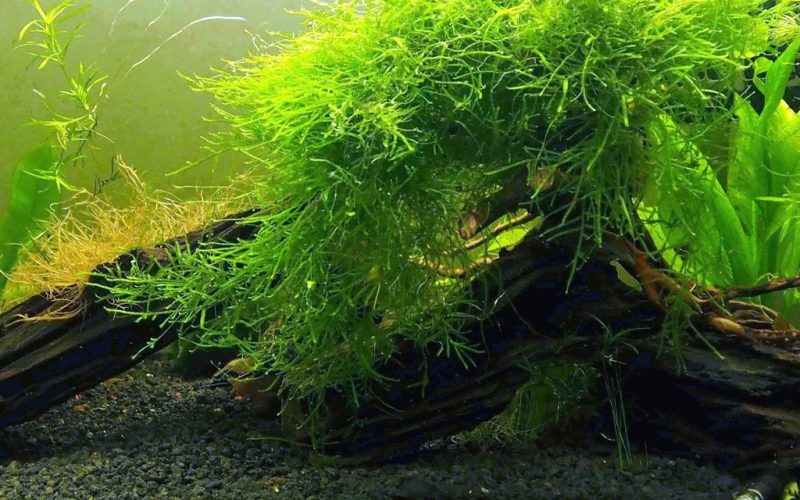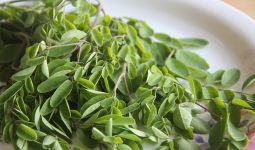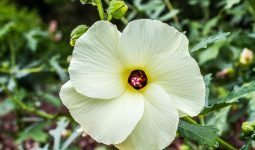Java moss, also known as Taxiphyllum Barbieri, is a fantastic plant addition to low-light aquarium used to complement tiny tropical freshwater fish.
The java moss is the perfect plant to have around your fish because it is easy to grow, can survive on any surface, and can tolerate several ranges temperature.
We could even say it almost impossible to harm the java moss. Java moss is one of many aquarists’ favorite aquarium plants.
Overview
Several names have been associated with the java moss, and some of them include the Christmas moss, Singapore moss, willow moss, triangular moss, dubious bladder moss, and the mini moss.
- Scientific name: Taxiphyllum Barbieri
- Origin: South-east Asia
- Synonym: Vesicularia dubyana
- Growth Rate: Slow to Medium
- Width: Can grow up to 4 inches (10 cm)
- Height: Can grow up to 4 inches (10 cm)
- Lighting Needs: Low
- Placement: Mid and foreground
- Difficulty: Easy
- Hardness: 6 to 20 dGH
- Temperature: 59 to 82 Fahrenheit (15 to 28 Celsius)
- pH: 5.5 to 8.0
Origin and distribution
Java moss was initially discovered in Southeast Asia, including Japan, Philippines, Malaysia, Vietnam, Singapore, Indonesia, and the rest of the islands of East Indian archipelago.
This exotic plant is noticeably common in moist climates and can be seen growing aggressively on tree trunks, rocks, and most times, river banks.
The java moss is still the most commonly used among other mosses and can be purchased throughout the world in many aquarium trades. Java moss can be gotten from both shops and online.
Also referred to as Vesicularia dubyana, recently, the Java moss has been reclassified again as a Taxiphyllum Barbieri. Although there are still arguments concerning the accuracy of the change of name, several references even recognize the original classification.
There are also speculations that the Vesicularia dubyana is a different plant and is also known as the Singapore moss. As said earlier, it is still very debatable, and in fact, many still believe these aquatic plants are the same moss.
Description
A Java moss can be physically characterized by their tiny irregularly branched stems with rows of small oval-shaped leaves that overlap. The bright green leaves of Java moss that grow on land are much bigger than the elongated leaves of submerged Java moss.
Java moss, like other mosses, has no true roots. It gets its nutrients through its leaves. It may either grow and float freely or would simply designate rhizoids to attach itself to hard surfaces like driftwood, rocks, decorations, sand, and even gravel.
Uses
Even though Java moss is used as a foreground cover for rocky and sandy substrates, they are known to grow and tribe on virtually any surface.
You can easily create amazing carpets of Java moss by attaching three plastic mesh, which can be placed directly against the sides of the aquarium or on the substrates to form a living wall. Java moss can also be used to cover unattractive parts of an aquarium or aquarium equipment.
You can fix the Java moss between two pieces of mesh and have them tied together with hook lines or threads. This helps to form a Java moss mat that would grow over time to shape a dense mat that can then be used in several ways. Creative aquarists have developed mesh balls, cones, and many other shapes.
Java most that free-floating plants can be used to provide is provide spawning ground for mop-spawning fishes. Fishes like gouramis and bettas that build bubble nests also benefit from these floating java mosses. It’s also provide hiding spots for fishes.
Fishes also scatter eggs in mats of Java mosses. The eggs that are scattered on the moss are hidden and protected from scavengers. The mat makes for a perfect cover for smaller and juvenile fishes. Newly hatched fry also feeds on Infusoria that grow on mature Java moss.
Care
Asides from maintaining a good supply of quality water to guarantee a healthy Java moss, continually feeding the plant with liquid fertilizer will help to improve the growth of your moss.
Debris is easily collected at the bottom of the tank, which doesn’t do well for the plant and can even damage the plant if large amounts are build up.
One way to have the moss cleaned is by having it removed from the tank and adequately rinse them in water away from spawning times. You don’t have to be worried about killing the plant while cleaning debris off Java moss. The plant is quite sturdy, so there is nothing to fear.
Despite how amazing the Java moss is, algae growth has remained the only problem the plant encounters. As soon as algae start growing on the moss, it is near impossible to have them removed. Discarding the whole plant is the best thing to do at this point.
One way to stop this from happening is by restricting excessive light that encourages the growth of algae. Algae growths are encouraged by elevated phosphates and nitrate, which tend to climb up when water in the aquarium isn’t changed regularly. Also, it helps to keep the water clean.
Propagation and growth
Java moss is a slow-to-medium grower and is propagated by division. Starting new Java moss plants requires the cutting off of some of the main plant and replanting, by placing them in another location.
The cutoff moss would then attach itself to a surface using its root-like rhizoids. Nonetheless, nutrition isn’t absorbed by the rhizoids the way actual roots do. They are only used to attach themselves firmly to any object. Nutrients are typically absorbed through the leaves and stems of the Java moss.
The growth of Java moss is a bit slower than you’d expect. They are even much slower when in warmer water temperatures. The Java moss then spreads itself both vertically and horizontally as it grows, often developing dense tufts of noticeable growth.
The plant also requires regular trimming to help maintain good shape and more delicate growth. Pieces that are cut off may also be replanted.
Do you have Java moss in your aquarium? What shape did you nurse your Java moss into? How were you able to get the plant? Share with us in the comments.








